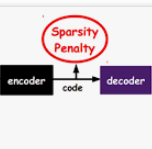项目名称: 基于非凸目标函数的稀疏学习及其在医疗诊断中的应用
项目编号: No.61273298
项目类型: 面上项目
立项/批准年度: 2013
项目学科: 自动化技术、计算机技术
项目作者: 沈超敏
作者单位: 华东师范大学
项目金额: 80万元
中文摘要: 稀疏学习是一类机器学习方法,它相对于一般机器学习算法,还额外要求问题的解有一定的稀疏性。稀疏学习方法在理论上符合科学基本原则中的简约(parsimony)原则,在实践中已在模式识别、生物数据处理等方面得到广泛应用。但其求解因涉及到0-范数,难度为NP hard。目前的求解方法是在一定条件下(如RIP条件)求其等价(如1-范数)或近似解。本项目将运用稀疏表示、压缩感知和优化等手段,发展出一套新的针对非凸目标函数的稀疏学习的求解算法。其创新在于:将含有0-范数的极值问题转换成等价的矩阵秩的极值问题,然后运用矩阵算法求解;或转换为截断的1-范数的极值问题,采用DC(凸函数之差)规划求解。预计,本项目的结果在解的性质、精度和速度等方面总体而言将优于当前各主要的稀疏学习算法。初步实验表明,该套算法能成功应用于老年痴呆症的关键病情指标分析和病情发展预测。本项目的最终成果将为稀疏学习提供新的思路和途径。
中文关键词: 稀疏学习;非凸函数;医疗诊断;稀疏表示;优化
英文摘要: Sparse learning is a kind of machine learning method, which requires additional property of sparsity for the solution compared with general machine learning methods. In the theoretical aspect, sparse learning follows the principle of parsimony; in the application aspect, it has been widely applied in many fields such as pattern recognition and biomedical data processing. However, since 0-norm is involved, the difficulty for solving the sparse learning problem is NP-hard. The common solution towards this barrier is to solve its equivalent (e.g. 1-norm) solution or approximate solution under certain conditions such as Restricted Isometry Property (RIP). In this proposal, we will use sparse representation, compressed sensing and optimization techniques to develop a novel method for non-convex objective function based sparse learning. Our novelties lie in that the minimization problem with L0-norm is converted into an equivalent matrix rank minimization problem or a truncated L1-norm minimization problem, so that the problem can be solved directly via matrix manuipulation or the difference of convex functions (DC) programming, respectively. It is expected that the algorithms proposed in this proposal will perform better than most major sparse learning algorithms in terms of the properties, accuracy and speed. Prelim
英文关键词: sparse learning;non-convex function;diagnosis;sparse representation;optimization
